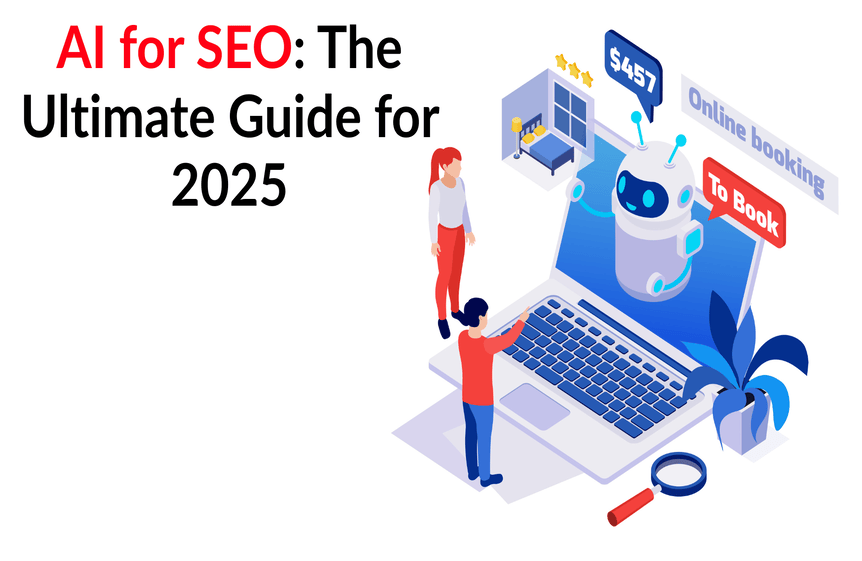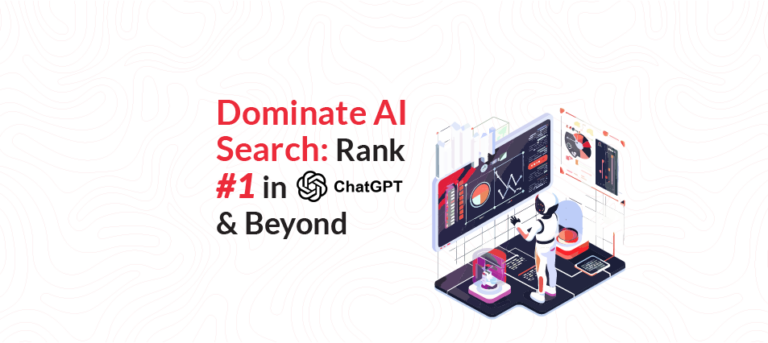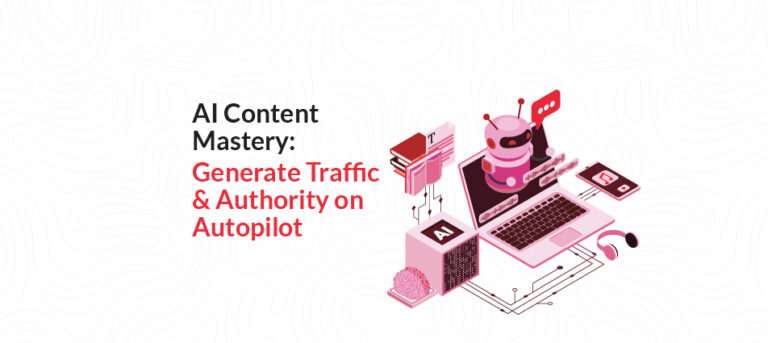AI for SEO: The Ultimate Guide for 2025
If you manage growth targets this year, you’ve probably heard the same request from product, sales, and leadership: make organic work harder, faster, and with clearer attribution. This is where ai for seo earns its keep. Think of it as a practical system, not a shiny tool set. In everyday work, artificial intelligence search engine optimization helps teams turn messy inputs—CSV dumps, call transcripts, long SERP pages—into decisions that a writer, developer, or analyst can act on the same day. A typical Monday looks like this: cluster 2,000 keywords into themes, shape three briefs that match search intent, draft metadata in two tones for A/B testing, and surface five technical fixes that save crawl budget. None of this replaces judgment. Editors still confirm facts, choose examples, and keep their voice steady. Engineers still own site speed and architecture. Strategists still decide where the brand should and shouldn’t play. The difference is cycle time. With ai for seo, what once took a week now fits inside a morning block, and your Tuesday can be about publishing and internal links rather than catching up. That steady cadence is how teams scale responsibly. When processes are written down, prompts are versioned, and outputs are reviewed, artificial intelligence search engine optimization stops feeling experimental and becomes part of how you ship.
What is AI for SEO?
Leaders often ask, what is ai seo in plain language? It’s the use of machine learning and large language models inside routine optimization work so that you can move from research to publication with fewer handoffs and fewer blind spots. You decide the audience and angle; the system speeds up discovery, synthesis, and suggested structure.
Role of Artificial Intelligence in Search Engine Optimization
Before the bullets, a quick framing: discussions about ai and seo usually fall into three buckets—finding patterns, producing language, and setting priorities. Here’s what that looks like in practice for seo optimization ai:
- Pattern discovery at scale
Group queries by intent, spot cannibalization, and surface gaps you can win with one supporting article or a comparison table.
- Language support, not ghostwriting
Turn briefs into first drafts, FAQs, alt text, and meta options. Editors then add examples, citations, and brand voice.
- Prioritization with reasons
Score tasks by lift vs. effort so sitemaps, CWV fixes, and content refreshes ships in a sensible order.
How AI is Revolutionizing SEO Optimization in 2025
Search is changing, but fundamentals still carry the day. The shift is in speed and breadth. A short explainer first, then the specifics.
- Intent-first topic maps
- Cluster keywords into themes tied to journeys (discovery, evaluation, purchase).
- Label subtopics for supporting assets: FAQs, comparisons, step-by-steps—and city pages for hyperlocal SEO when relevant.
- Cluster keywords into themes tied to journeys (discovery, evaluation, purchase).
- Evidence-based briefs
- Extract SERP structure (typical H2s, media, schema types) and mirror only what helps the reader.
- Add entities, internal link targets, and “must-include” examples so drafts start strong.
- Extract SERP structure (typical H2s, media, schema types) and mirror only what helps the reader.
- Drafts that respect voice
- Generate a clean first pass. Editors weave in customer language, local proof points, and screenshots from the product.
- Technical triage in hours, not weeks
- Parse logs for crawl waste and orphaned URLs.
- Flag CWV issues alongside a fix-first order (remove render-blocking, compress hero images, lazy-load below-the-fold). This sits under technical seo and prevents avoidable losses.
- Parse logs for crawl waste and orphaned URLs.
- Schema and entity clarity
- Suggest Product, FAQ, HowTo, and Organization schema.
- Strengthen brand and product entities so you’re easier to cite in summaries and shopping modules.
- Suggest Product, FAQ, HowTo, and Organization schema.
The Impact of AI on Traditional SEO Strategies
Classic checklists did not die; they got faster. You still care about indexability, relevance, and internal links. The lift comes from compressing research and QA so your team can spend time on positioning, clarity, and examples rather than formatting and boilerplate.
AI SEO Tools: The Best Tools for 2025
Use one best-in-class tool per job and cut the rest. We grouped the stack by tasks so you can move faster without bloating costs.
Research & clustering (keyword discovery, intent mapping)
- Semrush: A solid all-rounder for finding keywords and sizing up competitors. It helps you see who’s winning a topic and where the gaps are.
- Ahrefs: Great when you need depth—big backlink and keyword datasets, plus clear SERP views for spotting angles you can actually rank for.
- Keyword Insights: Uses AI to group hundreds of queries into neat clusters, so you get instant topical maps and know which pages to create first.
- TripleDart AI SEO Agent – flags ranking gaps/opportunities in minutes.
Brief & outline builders (SERP-mirrored structures, entities)
- Frase – generates research-backed briefs from top results.
- Surfer – AI content editor with on-page/outline guidance.
- Search Engine Land playbooks – frameworks for AI-era briefs & visibility.
Drafting & editing assistants (first passes, FAQs, meta, readability)
- ChatGPT – versatile drafting; shines with prompt discipline (persona/context/task/format).
- Jasper – marketing-focused AI copy workflows.
- Surfer AI – integrates draft + optimization in one place.
Technical diagnostics (crawl, logs, prioritization)
- Screaming Frog Log File Analyser – verifies bots, shows crawl behavior on real logs.
- Sitebulb (Desktop/Cloud) – deep crawls with clear prioritization & visuals.
- ContentKing (Conductor Website Monitoring): Keeps eyes on your site 24/7 and pings you the moment something changes—no waiting for the next crawl.
Reporting helpers (plain-English explanations, decay & cannibalization alerts)
- Conductor/ContentKing: Surfaces new issues and recent changes continuously, not just when you run a manual crawl—handy for catching problems before traffic dips.
- TripleDart AI SEO Agent: Turns raw data into quick summaries, highlights gaps and easy wins, and gives you a clear, prioritized to-do list.
- Backlinko’s AI tools shortlist – pragmatic picks & prompt patterns used by pros.
How to Use AI for SEO Effectively
A formal, simple workflow you can lift into your playbook today. It keeps ai for seo practical and auditable end-to-end.
- Discover opportunities
Pull seed terms from sales calls, support tickets, and analytics. Cluster by topic. Score clusters (volume × CTR proxy × business value). Shortlist five you can win.
- Design briefs with proof
Extract common H2/H3s from top pages. Decide what to keep, what to improve, and what to ignore. Add entity checklists, examples, and internal links to pillars/hubs. Attach schema suggestions.
- Draft, then refine
Use seo with ai to produce a first pass. Editors verify claims, add quotes, choose screenshots, and match brand tone. Accessibility check: alt text, heading order, link text that makes sense out of context.
- Ship with technical guardrails
Confirm canonical tags, indexability, pagination, and structured data. Remove render-blocking, compress media, and trim third-party bloat—these are core technical seo checks that protect performance.
- Measure & refresh
Track impressions, queries, CTR, and scroll depth. If a page stalls, adjust the angle, add a comparison table, expand FAQs, or improve linking between cluster pages. Run a quarterly SEO Audit so decay, cannibalization, and gaps don’t linger.
AI and SEO: Key Benefits for Your Website in 2025
A short note before the bullets: these outcomes show up repeatedly when teams blend people, process, and tools well.
- Coverage at scale: publish supportive pages you once postponed.
- Cleaner architecture: Kill cannibalization, rescue orphaned pages, and give every URL a clear purpose.
- Faster iteration: Jump from idea to live test in days—not weeks.
- Consistent on-page quality: Lock a repeatable pattern for titles, intros, and FAQs—so every page reads clean and on-brand at scale.
- Answer-engine readiness: Structure content and clarify entities, and you’ll get cited more often in summaries and AI results.
AI vs Traditional SEO: What’s the Difference?
Short answer: ai seo optimization speeds up the same basics—not a replacement. You still need a crawlable site, useful pages, and sensible internal links. AI streamlines the manual tasks in research, outlining, drafting, and QA. People still set the angle, add real examples, and provide the credibility that readers (and rankings) depend on.
Challenges in Using AI for SEO
The risks are manageable when you name them early and build a process around them.
- Accuracy and attribution
- LLMs can sound confident while missing sources. Require citations and expert review for claims, stats, and regulated topics.
- LLMs can sound confident while missing sources. Require citations and expert review for claims, stats, and regulated topics.
- Generic voice
- Without customer language and local proof, outputs feel the same-y. Interviews, support tickets, and demo notes fix that.
- Without customer language and local proof, outputs feel the same-y. Interviews, support tickets, and demo notes fix that.
- Over-production
- Too many thin pages waste the crawl budget. Merge, redirect, or remove weak URLs during quarterly audits.
- Too many thin pages waste the crawl budget. Merge, redirect, or remove weak URLs during quarterly audits.
- Shifting search features
- Interfaces will keep changing. Clarity, structure, and information gain keep pages resilient over time.
- Interfaces will keep changing. Clarity, structure, and information gain keep pages resilient over time.
Overcoming the Challenges of AI in SEO
A brief line first so the list is placed in an operational context.
- Editorial standards first: facts, sources, compliance, and legal review where needed.
- Prompt governance: shared templates, banned phrases, and tone notes; keep examples of “good” and “not good.”
- Human-in-the-loop QA: every page checked for headings, internal links, schema, and accessibility.
- Review rhythm: quarterly content audits, with a fix-first list that product and content actually ship.
AI-Driven Content Creation for SEO
Use AI where it truly saves time and keeps quality high. Below is a quick context line and then the bullets.
- Research: cluster topics, mine “People Also Ask,” pull recurring objections from sales calls to address on the page.
- Briefing: list entities, examples, tables/steps, visuals, and internal links. Add schema notes.
- Drafting: generate the first pass for long-form and product pages; editors humanize with quotes, case snippets, and local detail.
- QA: validate headings, alt text, and metadata. Test multiple meta descriptions for clarity and click-through.
Common Myths About AI in SEO
A line to add related terms like seo optimization, ai and keep this section connected to usage rather than hype.
- Myth: AI replaces strategy. Strategy picks audiences and outcomes; AI supports execution and analysis.
- Myth: More words always win. Depth beats length. Match the answer to the query and remove filler.
- Myth: Schema is optional now. Structure helps engines and answer systems cite you accurately.
- Myth: Automate everything.
Over-automation creates thin, repetitive pages. Use AI where it improves accuracy or speed—never as a default.
What’s the Future of AI and SEO?
Expect steady convergence between classic SERPs and answer surfaces. Brands using ai in seo will spend less time on reformatting and more on information gain: unique angles, comparisons, step-by-steps, and data that others don’t have. That is the work most likely to be cited—on a results page or inside a summary.
Conclusion
At Opositive, we operationalize AI as a disciplined assistant—not a replacement—within the SEO workflow. Map topics, prepare briefs, draft a first pass, and surface technical issues. Keep editors responsible for voice, examples, and claims. Do this, and ai for seo becomes a durable edge rather than an experiment. As you scale, document prompts, set review checklists, and measure outcomes so improvements stack over time. If you use ai for seo, keep fundamentals strong—fast pages, clear structure, credible examples—so your content stays visible even as interfaces shift.
FAQs
Best Prompt For SEO Content Writing?
Use a four-part frame: Persona, Audience & Goal, Task & Constraints, and Format & Length. Store good examples in a shared doc so drafts stay consistent.
What is SEO for AI called?
Teams often say “AI SEO” or “Generative Engine Optimization.” The aim is to make content easy to reference in summaries and chat results.
Can AI be used for SEO?
Yes—research, brief creation, first-draft support, technical triage, and reporting. Humans still make the final call on voice and claims.
Will AI replace SEO?
No. It accelerates the work; it doesn’t remove the need for strategy, evidence, or trust.
How to automate SEO with AI?
Start with clustering, briefs, metadata variations, schema suggestions, and decay alerts. Expand into dashboards that flag cannibalization and refresh candidates.











